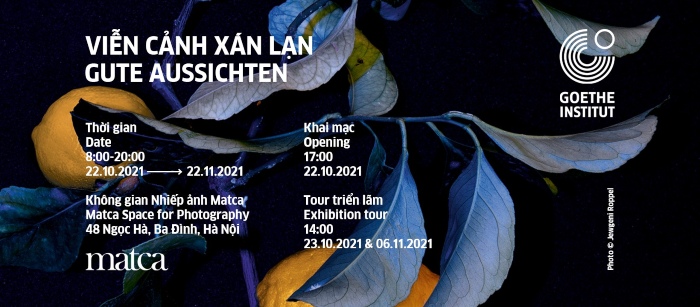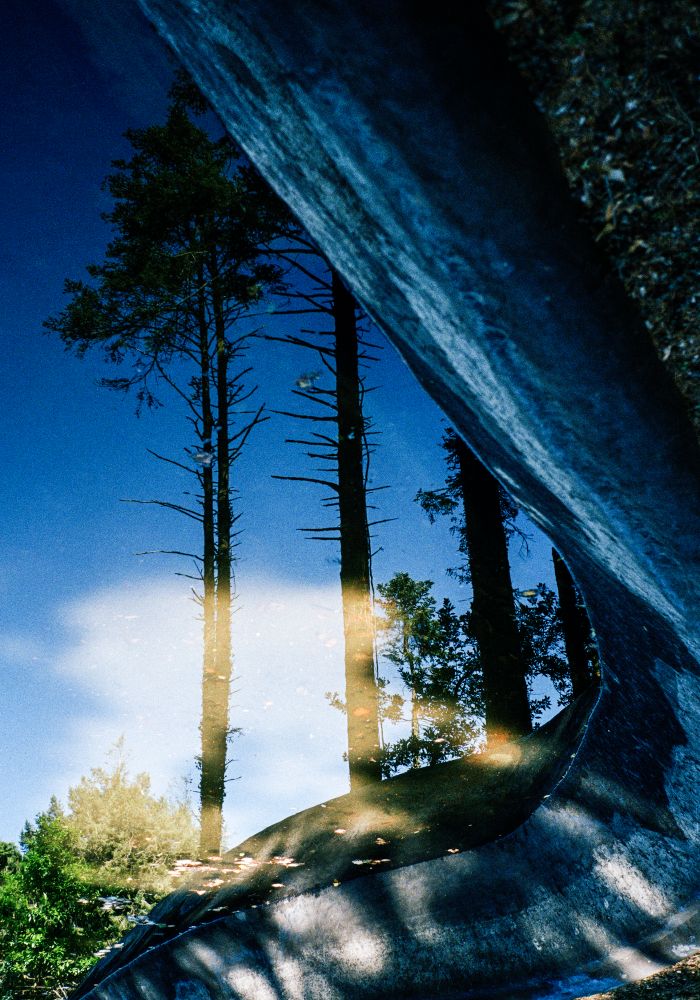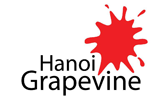Gute Aussichten – New German Photography 2021

Opening: Fri 22 Oct 2021, 05 pm
Exhibition: 22 Oct – 22 Nov 2021, 08 am – 08 pm
Matca Space for Photography
48 Ngoc Ha, Ba Dinh district, Hanoi
From Goethe Institut:
For the second time, Goethe-Institut Hanoi presents Gute Aussichten – New German Photography 2021 in cooperation with MATCA.
43 photos by 6 emerging artists take us to different regions, inviting discussions on various social issues and challenging the boundaries of photography itself. The ongoing work “Trees” transforms plants into main characters, highlighting their unique features and relationships to their surroundings. Taking inspiration from age-old folklore, “Glowing Eyes” depicts isolated communities living on the banks of the Amazon in Brazil with a touch of magical realism. “When emotions fall silent” are heartfelt portrayals of patients with eating disorders, while “Y A Manifesto” provides a playful critique of generation Y. Both combining various media such as digital renderings and artificial intelligence, “Squares” and “Terrain and Biotopes” raise questions about the impact of new technologies on photography and our real world.
Together, they form an ensemble of singular visions in contemporary German photography.
Participating artists: Sophie Allerding, Lorraine Hellwig, Aras Gökten, Jewgeni Roppel, Rebecca Sampson, and Konstantin Weber.
About the artists and the works
Glowing Eyes 2020

Glowing Eyes is about communities living on the banks of the Amazon river in Brasil known as Ribeirinhos. Many of these river dwellers are descendants of the indigenous population. Living in their own world they have little exchange with Brazilian society. The Ribeirinhos maintain sustainable economies and make their living from farming manioc, fishing, and collecting Brazil nuts. The laws of nature define their daily routines, their myths and tales, and their view of the world. Their interaction with nature is respectful.
In her series Glowing Eyes Sophie Allerding “translated” the Ribeirinhos’ stories that for centuries have been passed on orally into a tableau of universal images. Visually she is clearly referring to the ‚magic realism’ alive in Latin American art, and literature by poets such as Octavio Paz and Gabriel García Márques.
Sophie Allerding was born 1993 in Hamburg, Germany. In 2020 she finished her Bachelor studies in communicaTion design at the Hamburg University of AppliEd Sciences. Actually she is in her Master studies at the Royal Academy of Art in the Hague in the Netherlands. Sophie Allerding is award winner of GUTE AUSSICHTEN – new german photography 2020/2021. Within that frame her work is actually shown at the Künstlerhaus Dortmund. In May 2021 it will be presented at the State Museum of Rhineland Palatinate in Koblenz, and in October 2021 at the House of Photographie, Deichtorhallen, Hamburg, Germany.
Y A Manifesto 2017/2018

Hellwig’s Y A Manifesto and the collection of photographs that accompanies it can be seen as a conscious reaction to this history of avant-gardes; Hellwig expressly calls it “Neo Neo Da Da.” The principle of radical positioning that has been valid in this context for a long time seems to have made room for a comprehensive indifference, even though this impression is not confirmed if you look a bit closer. All text fragments fit into a definable pop-culture environment, which is formed from a specific canon of literary quotes, advertising slogans, liberal statements, internet tutorials, or song texts. This context even makes the term “whatever”, which keeps coming up in this context, into a sort of decisive plea. In Lorraine Hellwig’s photographs it is actually possible to find something that can be called “we”: the “we” of a globalized, urban middle class with self-confident consumer habits, excessive networking, and ample knowledge of pop culture. There is also a denial of the radical negations of the old avant-gardes, along the lines of “It’s the economy, stupid!”. But who knows how it will continue? Incidentally Lorraine Hellwig’s Y A Manifesto ends with the statement, “It’s not the end (!!!).”
(written by Dr. Thomas Niemeyer).
Lorraine Hellwig was born 1993 in Munich, Germany. In 2018 she finished her Bachelor studies in Photographic Design at Munich University of Applied Sciences. She lives in Paris, France, and works as a freelance photographer mostly in the fields of fashion and editorial.
Terrain und Biotop

“Terrain und Biotop” is the result of an extended stay in Songdo City, Korea and an artist residency in Kaohsiung, Taiwan between 2017 and 2020.
Songdo and new districts of Kaohsiung City can be described as so-called “Smart Cities“ – designed on a drawing board, cutting-edge, hyper-real, networked and full of sensors and cameras. The appearance of these new cities and districts seem to not refer to specific culture or heritage, instead refer to global visual trends that root from the Digital, like e.g. interface design and gaming.
The displayed collage of photographs, renderings and graphic images, sourced from real geographical locations, serve to evoke fictitious narratives and raise questions on human’s relationship to urban architecture and nature.
born 1978 in Stuttgart holds a Diploma in Sports Sience and Oeconomics and initially worked in the field of advertisement. Subsequently studied Photography at OKS School and graduated 2014. Currently he is studying Fine Art at HfbK Hamburg. His work has been exhibited in international Art Festivals, Galleries and Museums. His Book „Arkanum“ was nominated for Luma Dummy Book Award Arles and Kassel Photobook Dummy Award.
Trees 2015-2021

THamburg-based photographer Yevgeny Roppel, born in Kazakhstan in 1983, focuses on people and their relationship with nature in his long-term projects.
Constantly traveling the world, Roppel goes in search of places in nature where the longing, the unconscious, and the cultural and spiritual work of people have manifested themselves.
Just as each person is unique, each tree is different in its structure. The optical shape as well as the view of the trees show up in this exhibition as multifaceted as the places themselves where they were photographed; Spain, Portugal, Vietnam, Russia, Israel, Georgia, Germany…. just to name a few.
In the close-up, the viewer gets very close to the tree; the sometimes gnarled and skin-like texture of the tree’s bark is reminiscent of human bodies and evokes intimacy. In the long shot, the viewer learns about the tree’s relationship to its environment; at times it appears inhabited (tree house) or as a home for animals, at other times it serves as an ornament on a traffic island, a refuge, or a stage for acrobats.
Roppel’s view is emotional, mysterious and humorous in equal measure, but especially full of reverence. In his “tree portraits” it becomes clear that the tree not only holds a sacred position for man in general in terms of cultural history, but also, as he says, unconsciously triggers fascination in the photographer himself.
Roppel works on location with given technical possibilities of photography. He uses transparencies and flashes to make visible what is normally unrecognizable to the human eye, but still perceptible; the transcendent moment and the spiritual atmosphere of a place. The result of the light-dark contrasted – luminous – and orange-green colored – tree photographs thereby moves on a fine line between natural and kitschy as well as mysterious and eerie atmosphere. Roppel thus touches on themes that affect both trees and people: Originality, transformation, and transience.
Text by Johanna Vogel
Jewgeni studied the Master in Photography at Burg Giebichenstein Halle/Saale and M.A. Photography and Media at FH Bielefeld Germany, where he worked on the topics of new search for utopia in Siberia. He graduateD with “Magnit” a long- time project about new spiritual landscape and new movements in Siberia since 90ies. 2015 “Magnit” was included in “GUTE AUSSICHTEN 2015/16”, was awarded EI Award Encontros da Imagem Portugal and exhibited in eight countries. Various exhibitions followed on international on photography festivals with other projects. Beside personal projects Jewgeni works for diverse magazines and is curating the platform EEP Berlin for contemporary photography from the post-soviet countries.
When Emotions Fall Silent

Sampson’s photographic work “Aussehnsucht” introduces us to people with eating disorders. Her aim is to look behind the faces and beyond the bodies of those affected. In doing so, she always preserves the dignity of the person. With a keen sense, the photographer succeeds in creating landscapes of the soul in her pictures, in which many injuries are visible. It leaves it up to the people in which way they are ready to be photographed and to what extent they allow foreign insights. And it is this moment in which the photographer fully engages with her counterpart that generates the strength and authenticity of her portraits
Rebecca Sampson is a German-American photographer living in Berlin. Her photographic work has tackled a wealth of socially and personally sensitive topics—from Berlin‘s African drug dealer community, through the treatment of eating disorders to the parallel lives and ambiguous sexual identities of Hong Kong’s Indonesian housemaids. Her passion is for reportage and social commentary. For her picture stories, she does extensive research and writes her own texts.
Rebecca studied photography under Ute Mahler at the Ostkreuz-School in Berlin. She has won “gute aussichten” award and holds scholarships from the Foam Museum Amsterdam, the Robert Bosch Stiftung and the Literary Colloquium Berlin (LCB). Her work has been exhibited, among other places, at the Museum Deichtorhallen, Haus der Photographie, Hamburg, at the Willy- Brandt-Haus, Berlin, and internationally in America, Hong Kong, India, Luxembourg, Mexico, The Netherlands, Poland, Austria, Cyprus and China. Her book “Apples for Sale” was published by Kerber Verlag and was supported by the Goethe-Institut Hong Kong.
Squares (2020)

Using a variety of objects and various media, Konstantin Weber’s work Squares reflects on the significance of AI-supported image processing and computer vision for the work of photographers: what implications does it have for the role and raison d’être of photography today if landscapes or product images can be generated with digital applications faster and often better than they can be photographed? If photographers view their images strictly as digital data, why should they be content creating prints for hanging on walls? Why not create new images, texts, moving pictures with them? Similarly, Weber’s work reflects the close relationship between new technologies and the medium of photography and how the constantly growing archive of digital images influences the way that artificial intelligence perceives the world. His “image research” gives manifold impulses for a new discussion about “post-photographic” photography and the profound overlapping of reality and simulation that already defines the practice of photography today.
Konstantin Weber was born 1992 in Heppenheim, Germany. He followed studies in Sociology and Anthropogeography in Frankfurt/Main and Diploma studies in Fine Arts at the Free Academy of Fine Arts in Mannheim, Germany. Konstantin Weber is award winner of gute aussichten 2020/2021. Within that frame his work is actually shown at the Künstlerhaus Dortmund. In May 2021 it will be presented at the State Museum of Rhineland Palatinate in Koblenz, and in October 2021 at the House of Photographie, Deichtorhallen, Hamburg, Germany.
Follow updates on event’s page.
 | Goethe-Institut Hanoi 56-58-60 Nguyen Thai Hoc, Ba Dinh, Hanoi Tel.: +84 24 3734 2251 Fax: +84 24 3734 2254 [email protected] website |
















